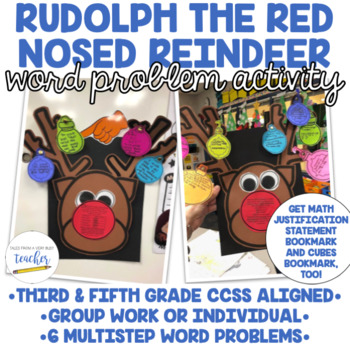Rudolph Reindeer Math Activity
- Zip
What educators are saying
Description
*Updated with an EDITABLE nose so you can write your own word problems!*
With this activity students can practice working out math word problems and justifying their responses, while still having some holiday fun.
There are 6 multistep word problems to choose from in this download. You can assign them individually to students or put students into collaborative groups. Students solve the problems and use the ornaments to show their work and write justification statements.
You can also have students the math justification bookmarks and CUBES bookmarks that are included in this download.
Check out my Instagram for more information on this activity and see how I used it in my classroom!
Follow me!
Your feedback is appreciated!
Please go to your My Purchases page (you may need to login). Beside each purchase you'll see a Provide Feedback button. Simply click it and you will be taken to a page where you can give a quick rating and leave a short comment for the product. Each time you give feedback, TPT gives you feedback credits that you use to lower the cost of your future purchases. I value your feedback greatly as it helps me determine which products are most valuable for your classroom so I can create more for you. ☺
Be the first to know about my new discounts, freebies and product launches:
Look for the green star next to my store logo and click it to become a follower. Voila! You will now receive email updates about this store. ☺


